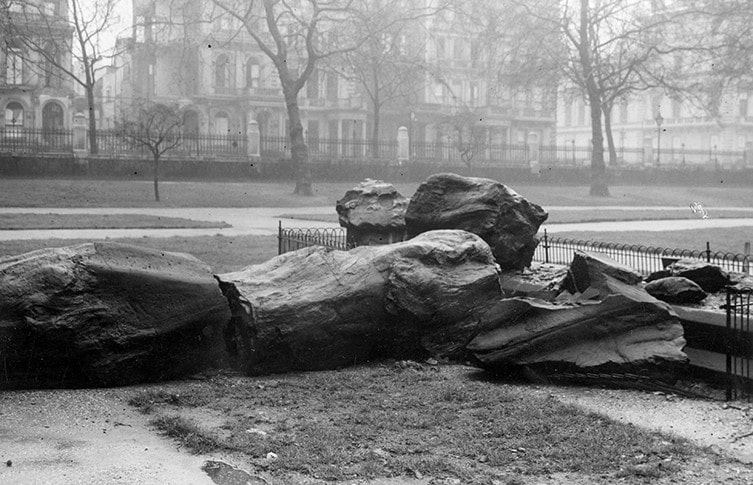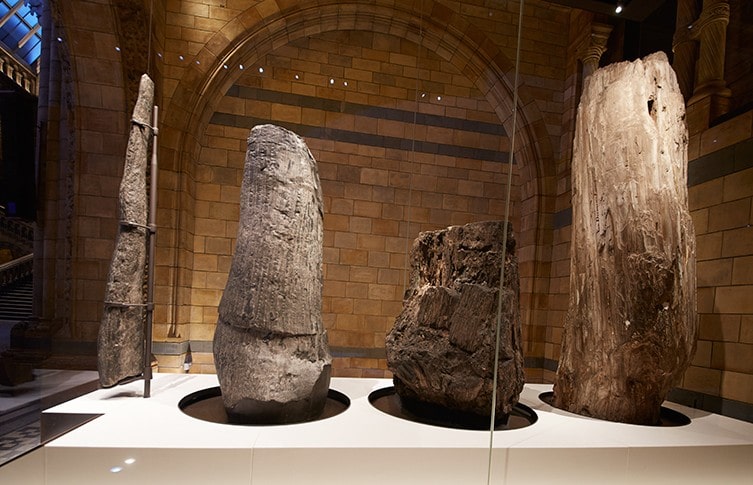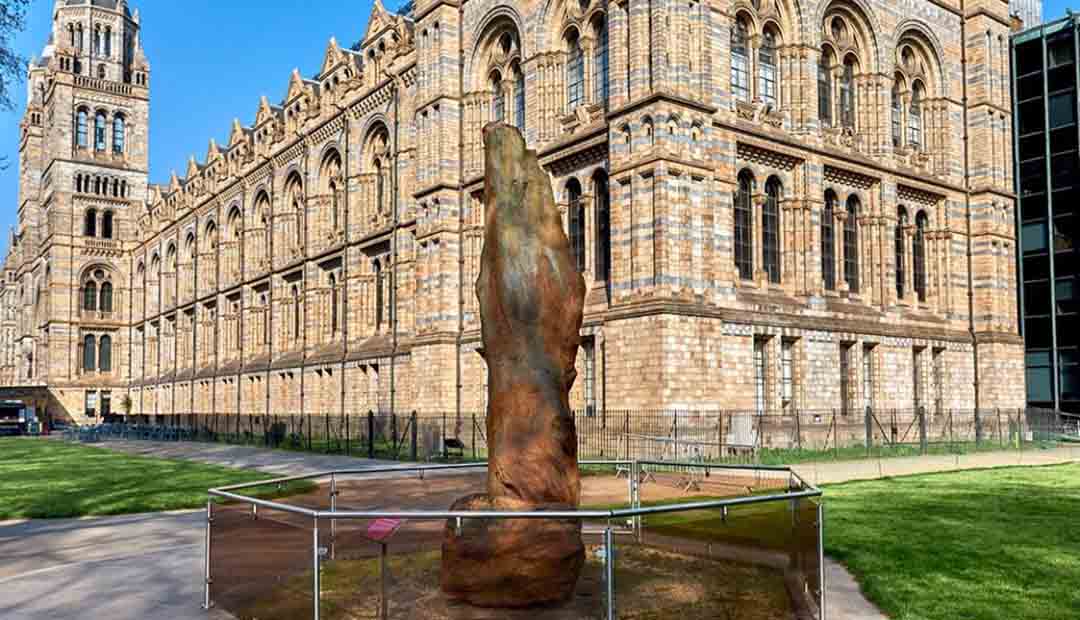Exploring the History of a 330-Million-Year-Old Fossil Tree
The fossil tree on the Museum’s east lawn is thought to have been in its current position since the 1970s, but it’s been part of the collection since 1873. A large petrified tree that lived around 330 million years ago has been towering over visitors to the Museum for over 130 years, making it one of the longest-serving exhibits.
A Scottish tree
Craigleith Quarry was once the largest and most productive of Edinburgh’s quarries. The sandstone extracted in its 300 years of operation can be seen in the city’s historical architecture, including Edinburgh Castle. The quarry was filled in 1995.
But the site is also well-known for its fossil trees, the first of which was discovered in 1826. The trunk that now resides on the Museum’s east lawn was uncovered in 1873 and found approximately 56 metres below the surface.
The fossil tree, Pitys withamii, lived during the Carboniferous Period, which lasted from around 359 to 299 million years ago. Many of the coal beds that Britain came to rely on form at this time, made up of plants like P.Withamii.

The specimen was originally thought to be an ancient conifer but was eventually determined to be a type of seed fern (pteridosperm). In life, it would have featured large, fern-like fronds sprouting from the crown of its towering trunk and would have used seeds for reproduction. Seed ferns are an extinct group and their unique collection of characteristics is not seen in plants today.
Despite its London home, the tree’s Scottish origins weren’t forgotten. In 1986 the MP for Edinburgh West contacted the Museum to enquire about returning the large specimen to Edinburgh to put it on public display. The Museum declined this request but noted that another Carboniferous trunk from Craigleith Quarry was already on public display at the Royal Botanic Garden Edinburgh. At 10.5 metres long, it is Scotland’s largest plant fossil.
A long-standing exhibit
The trunk has been housed in the Museum’s gardens for over 130 years, although it hasn’t always been in the same spot. The tree arrived at the Museum in six large pieces with numerous smaller fragments, and originally the trunk was displayed lying on its side. The section of the specimen on display today towers over visitors at six metres tall, but with all the pieces laid out together, it measured around 12 metres.
The wood is petrified, meaning that it has been turned to stone. For petrified wood to form, organic material is replaced by minerals – in this case, iron and calcium carbonates – while the plant retains its original shape and structure. This fossilisation process has increased the weight of the specimen’s trunk to around three times that of normal wood. Its exact weight isn’t known but is estimated at around 11 tonnes.

The tree stood upright in 1887, but only the large pieces were assembled. It remained standing until November 1940, when it was knocked down and broken into several pieces by an air raid bomb.
The tree has since been moved further from Exhibition Road, which lies to the east of the Waterhouse building. It’s thought this happened in the 1970s when the Palaeontology wing was being built.
How to clean petrified wood
The fossil tree’s condition is assessed yearly, but in the summer of 2019, Museum conservators gave the specimen its most intensive clean in over 15 years.
Working from inside their own scaffolding ‘treehouse’, the team had to move quickly so the tree wasn’t screened off from visitors for too long. Ultimately it took four full days of work, plus a few early mornings to clean it from top to bottom.
Senior Conservator Lu Allington-Jones says, ‘It was like being in our private treehouse. We could hear the public talking outside it, but no one knew we were there or what we were doing.
‘It was challenging because no one seems to know when the tree was last cleaned, so we didn’t know how long it would take and we had a really small window.’

As they were dealing with a specimen displayed outdoors, the conservators faced challenges they wouldn’t normally encounter. Bird droppings had to be cleaned off using water and cotton swabs, algae were removed with soft brushes and ethanol, and moss and lichens were picked off with plastic and wooden picks.
Plants can cause a lot of damage to stone as their roots grow on the surface. This can cause flaking and cracks. Additionally, the water that plants retain on the surface of the stone can cause further damage when it freezes and expands in winter. A concrete-like material that is thought to have been used to fill gaps in the 1970s had started to crack, so the team had to strengthen it.
The conservators were also accompanied by a seemingly angry tube web spider (Segestria senoculata) and multiple plane tree bug nymphs (Arocatus longiceps), which are usually found in the plane trees that grow at the edges of the Museum’s lawn.
The team will continue to keep an eye on the tree’s condition. Lu says, ‘We’re going to leave the specimen open to the elements – we don’t want to add any coatings that might deteriorate. But we’ll take photos so we can monitor its condition in the future.’
Fossil trees in Hintze Hall

The specimen on the east lawn isn’t the only fossil tree displayed at the Museum. In Hintze Hall, four fossil tree specimens are also on show.
The trees are from four different geologic periods, ranging from a Devonian specimen that is 385 million years old to a tree that is 25-56 million years old.

These four trees grew in vastly different climates and atmospheres, and their preserved structures can provide clues about the ancient environments they lived in. The Museum’s palaeobotany collection of fossil plants, algae and fungi spans 3.5 billion years of Earth’s history. Scientists can use these specimens, including fossil trees, to chart historic climate change and make predictions about our planet.




